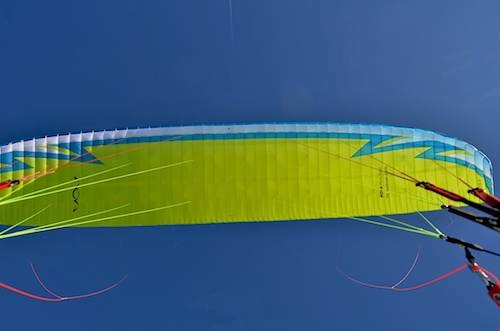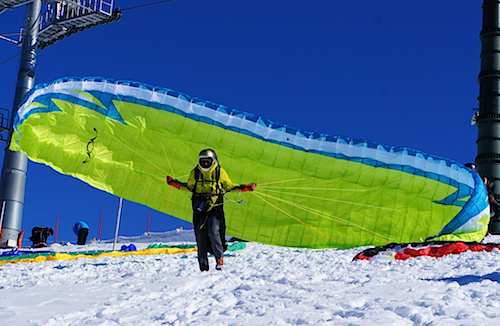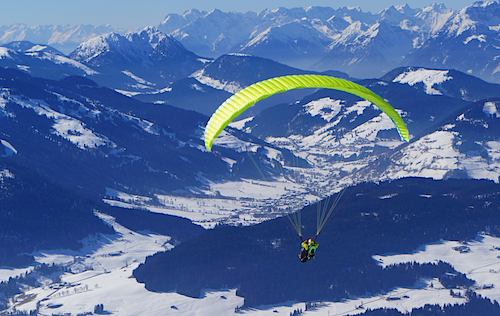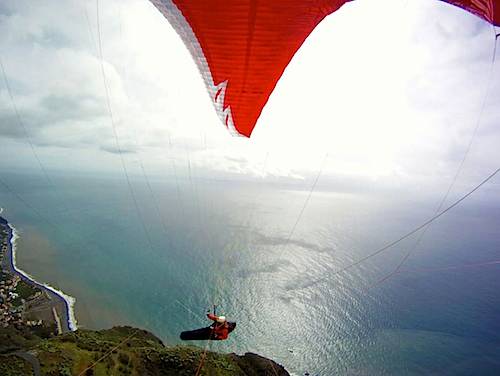
In the last weeks I have been asked a lot about MENTOR 3, so I have decided to summarize my impressions.
But before you keep on reading please note:
- This is NOT a test. I don’t have the skills as I pilot to be able to do so.
- I am 100 % biased! I handle the Public Relations for NOVA (though in an external agency) and I take care for the NOVA Pilots Team. Yet this is not an official NOVA statement.
What you will read here is in three steps:
- 1. You read about my flying habits so you understand my angle of view.
- You read about my feelings concerning Mentor 2. If you have flown it yourself, this might help you to evaluate my feelings concerning Mentor 3.
- You read about Mentor 3.
1. My flying habits and attitude
I have been flying paragliders since 26 years without any accident at all (touch wood). I think mainly because of the fact that I am a chicken. So I will NOT tell you about stalls, collapses, negatives and stuff. The test pilots and the certification institutions know much more about this.
I love XC flying. All kinds of acro is not my world. I am happy to simply fly.
2. My thoughts about MENTOR 2
As I already said I like flying XC. And flying long distances means you shouldn’t land early. After many years of little success, I found out that I can fly longer distances with a lower categorized wing. Why that? I have a certain “amount of concentration” to spend during an XC day. If I spend too much on the wing, I bomb out early. That’s why I have been flying EN B’s in the past years.
The XC-strength of MENTOR 2 was (and still is) the overall package. Top performance in REAL LIFE (I am talking the achievable L/D and the average speed on a 200+ km day– and not only the 5 a.m. lab conditions for a glide down the hill), high passive safety (in particular the relation performance/safety), stable on bar, responsive but not nervous, compact canopy, good feedback without being shaky – and the overall well-feeling.
I think that is the major reason for the M2’s success. People try it, like it, buy it – and are happy.
3. And now MENTOR 3
I haven’t done any longer XCs yet, but I spend some days on Madeira with Guro Bjerk, Werner Luidolt (NOVA Pilots Team) and Andrea Dorsch from my home club. Conditions there: soaring plus small but strong thermals (nothing for beginners, unfortunately as the Island is SO beautiful and has more than 300 flyable days). Here are my impressions:
- Launch: couldn’t notice any difference against Mentor 2.Flying straight: no difference.
- Canopy feedback: no major difference. Maybe the M3 talks a bit more. But the overall feeling is very, very similar.
- Turning: no difference until pulling a brake line until about 5 cm above carabiners (with my wing load, Size M, fully loaded). That’s when the pressure on the brake lines on M2 increases considerably. The M3 requires less power to pull the lines beyond this point. On Madeira with the narrow thermals, this was very evident and it is the same in narrow spring thermals in the Alps.
As a result, the M3 seems to be more willing to turn. I don’t know whether it really turns quicker or whether it is just a subjective impression resulting from the lower brake pressure. But anyway: I LIKE THIS A LOT. The M3 is more comfortable to fly.
And I think the M3 is a bit more precise to steer. - L/D: Can’t say anything, as we couldn’t do any proper comparisons. I simply believe in Papesh’s words. He hasn’t been cheating in the past.
- Speed bar: Even better then M2 (and it’s already one the strengths of M2)! Very, very stable, even on full bar. The polar is also flatter than on M2: the more you accelerate, the bigger the difference will be. I also think that the Vmax is higher.
- Thermalling: No major differences. I think the M3 has even less “levering” when hitting a thermal with one side and is even more willing to enter it. It feels like it is actually pushing towards the thermal. Generally I am very happy with the climb rate no matter whether in narrow or wide turns. But definitely the pilot always matters more than the wing when talking about the climb rate!
- Collapses (I am not talking about what is happening when it collapses, I am talking about the resistance to collapses): I haven’t had many collapses with my M2 at all, actually only one that I saw in two years. Mostly I only “heard” something. It might be that I have an active style preventing collapses, but I would also say that both M2 and M3 have a very high collapse resistance.
- Big ears: almost no difference. Large reduction of surface, effective manoeuvre, wing still steerable with weight shift, easy to hold, wing tips are quiet, M3 re-opens mostly without any pumping, M2 required a little (with my wing-load)
- Landing: no difference.
Summary: Mentor 3 feels very similar to Mentor 2. But it performs better, is more fun and more relaxed to fly.
As I said: this is 100 % subjective and biased, but maybe it still helps.
Enjoy paragliding and always happy landings
Till
P.S.: Find out more “official stuff” on MENTOR 3 on the NOVA website.



